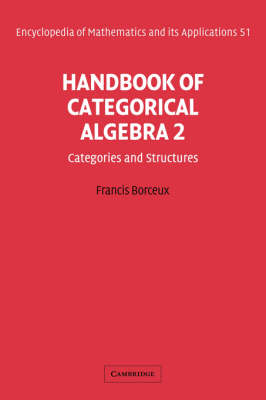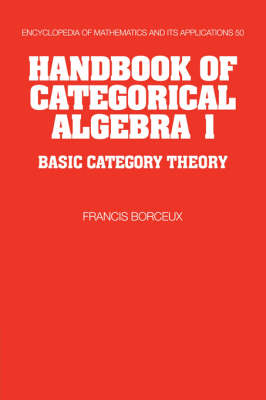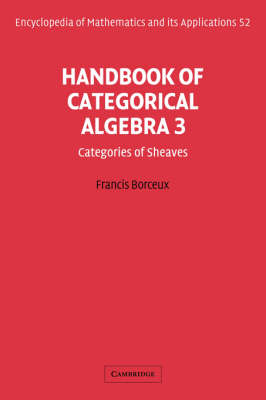Encyclopedia of Mathematics and its Applications
3 total works
Handbook of Categorical Algebra: Volume 2, Categories and Structures
by Francis Borceux
Published 3 November 1994
The Handbook of Categorical Algebra is designed to give, in three volumes, a detailed account of what should be known by everybody working in, or using, category theory. As such it will be a unique reference. The volumes are written in sequence. The second, which assumes familiarity with the material in the first, introduces important classes of categories that have played a fundamental role in the subject's development and applications. In addition, after several chapters discussing specific categories, the book develops all the major concepts concerning Benabou's ideas of fibred categories. There is ample material here for a graduate course in category theory, and the book should also serve as a reference for users.
Handbook of Categorical Algebra: Volume 1, Basic Category Theory
by Francis Borceux
Published 26 August 1994
A Handbook of Categorical Algebra is designed to give, in three volumes, a detailed account of what should be known by everybody working in, or using, category theory. As such it will be a unique reference. The volumes are written in sequence, with the first being essentially self-contained, and are accessible to graduate students with a good background in mathematics. Volume 1, which is devoted to general concepts, can be used for advanced undergraduate courses on category theory. After introducing the terminology and proving the fundamental results concerning limits, adjoint functors and Kan extensions, the categories of fractions are studied in detail; special consideration is paid to the case of localizations. The remainder of the first volume studies various 'refinements' of the fundamental concepts of category and functor.
The Handbook of Categorical Algebra is intended to give, in three volumes, a rather detailed account of what, ideally, everybody working in category theory should know, whatever the specific topic of research they have chosen. The book is planned also to serve as a reference book for both specialists in the field and all those using category theory as a tool. Volume 3 begins with the essential aspects of the theory of locales, proceeding to a study in chapter 2 of the sheaves on a locale and on a topological space, in their various equivalent presentations: functors, etale maps or W-sets. Next, this situation is generalized to the case of sheaves on a site and the corresponding notion of Grothendieck topos is introduced. Chapter 4 relates the theory of Grothendieck toposes with that of accessible categories and sketches, by proving the existence of a classifying topos for all coherent theories.


